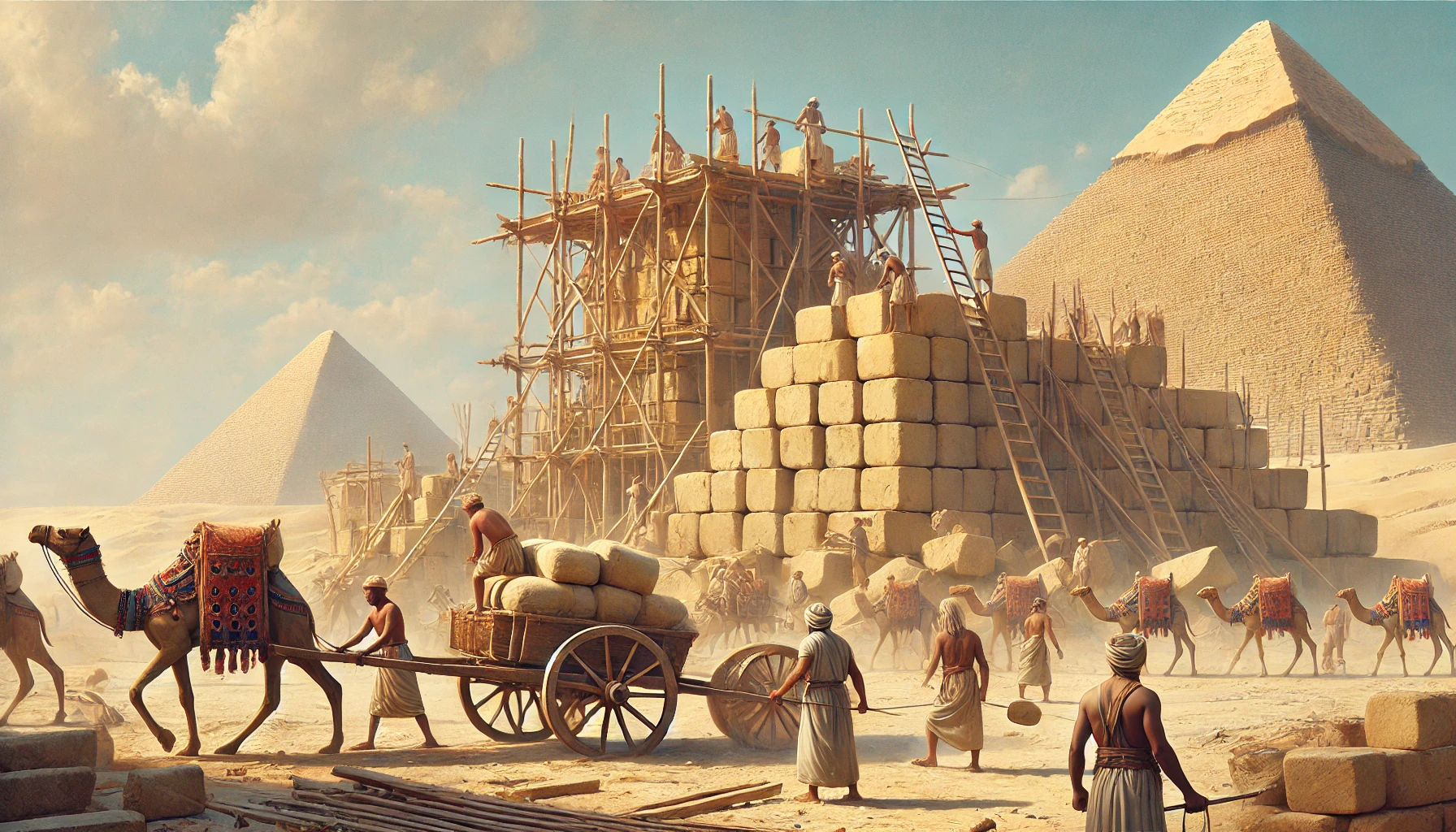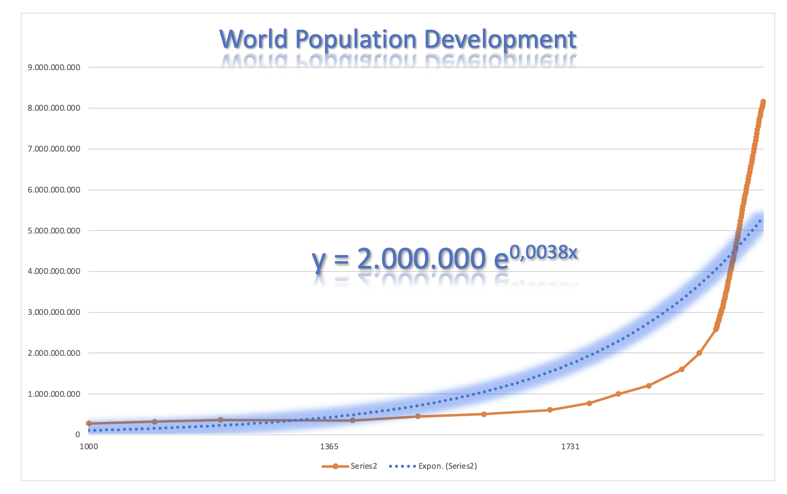The Pyramids of Giza and More
March 19th, 2025
I would like to start by summarizing some of what we "know" about the pyramids, particularly the Great Pyramid of Giza. Nowadays, this information can be easily compiled through an internet search.
- Three pyramids stand on a leveled plateau (330 x 250 m)
- There are structures beneath this plateau
- The Great Pyramid consists of approximately 2,650,000 stone blocks
- The average weight of these blocks is 2.5 tons, sourced from the immediate surroundings
- The granite blocks inside weigh between 2.5 and 50 tons
- The granite blocks originate from a quarry 800 km away
- The estimated construction time is about 20 years
- The orientation of the Great Pyramid is extremely precise (comparable to modern buildings where exact alignment is crucial)
- The construction is earthquake-resistant
- The pyramids were built as tombs for pharaohs

I will take a bold stance here and claim that the story we learn in school simply cannot be true and is entirely fabricated. I want to emphasize that I, too, believed this story for many years and tried to imagine how the Egyptians could have worked the stone with copper chisels and transported the blocks into place using complex ramp systems. However, a very good friend once told me: "If there are many possibilities but no clear solution, the simplest assumption is usually the most probable."
So, what if the construction did not happen as described? I will now explain why I believe this. I use the word "believe" because I would be happy to be convinced that I am wrong.
The Plateau
Let's start with the plateau. I claim that one must have considerable knowledge of the underground conditions to plan structures of this magnitude. The Leaning Tower of Pisa is much lighter in comparison! Additionally, the pyramids contain passages that extend below ground level, meaning this had to be planned before construction began. However, this preparation work is not accounted for in the estimated construction time. Since the purpose of these passages remains unclear in historical records, we cannot even determine the full extent of the work involved in constructing the plateau.
The plateau itself consists of a similar number of blocks as the Great Pyramid and exhibits an exceptionally precise leveling. According to Wikipedia (as of February 23, 2025), the height deviation across the entire 330 x 250 m area is only 21 mm. This level of precision has not been surpassed, even with modern technology. Furthermore, massive stone blocks weighing over two tons were used, fitted together edge to edge. One should consider how such a feat could be achieved even today.

The construction of the pyramids raises even more questions. Most of the limestone blocks supposedly came from the immediate vicinity, which somewhat reduces the transportation challenge. However, an estimated 100,000 to 200,000 granite blocks were transported from a quarry 800 km away. From this point onward, the explanations become vague.
Let’s analyze this mathematically. Twenty years is roughly 7,300 days. Even assuming a few years of preparation, this still means more than 10 multi-ton granite blocks had to be quarried, transported, and placed every single day. I find it impossible that the builders, using only the tools and techniques attributed to them, could have accomplished this without us having any clear understanding today of how it was done.
Considering the total of 2.65 million stone blocks, and assuming a maximum of 12 hours of daily labor (since precision work by firelight seems impractical), the numbers are staggering. On average, 30 blocks would need to be placed per hour—one every two minutes. Each block had to be precisely shaped and fitted, despite the fact that they were irregular in size and shape, which incidentally contributes to the pyramid's earthquake resistance. This level of precision further complicates the logistics.
Imagine a modern construction site where trucks deliver multi-ton stone blocks. Even with today’s technology, unloading and precisely placing such blocks every two minutes seems unfeasible. Such a construction process, sustained over 20 years, appears outright impossible - even using modern techniques.
Population Considerations
Another overlooked factor is the population at the time. Today, we often debate whether we are heading toward overpopulation. A simple reverse calculation based on modern population models suggests that there would not have been enough workers available to construct the pyramids. I will revisit this point later.

In my view, a construction time of 20 years for the Great Pyramid is completely unrealistic. Even if we multiply that by ten, making it 200 years, it still seems implausible. Adding the time required for the plateau would extend the timeline across multiple generations. If the pyramid was intended as a tomb, this raises another issue: the construction time far exceeds a human lifespan, making its purpose as a pharaonic tomb questionable.
The Unanswered Questions
To summarize my thoughts: In Egypt, there stand massive pyramids, structures that have endured for millennia. Yet, we cannot definitively answer: Who built them? How were they built? For what purpose?
I do not claim to have the answers. I am not suggesting extraterrestrials or giants. However, what astonishes me is that for generations, schools have taught a version of history that is demonstrably incorrect, yet no one seems to question it. The calculations involved require no advanced mathematics — just basic logic.
In recent years (since 2020), I have frequently encountered the question "Why?" Why would someone fabricate such a history? It makes no sense. This question applies to many areas—medicine, climate hysteria, overpopulation, wars—where there never seems to be a truly satisfying answer.
Religious and Scientific Implications
Interestingly, biblical texts (Christian, Jewish, and Muslim) do not mention the construction of the pyramids, even though the Egyptians are referenced. This omission does not necessarily negate a divine or higher existence, but it raises the question: To what extent did those who wrote these texts omit or selectively include details to prevent certain questions from arising?
As a physicist, this was the first direction in which my thoughts led me. However, even my own fundamental assumptions were challenged. The Theory of Evolution suggests that civilizations progress over time. If this were strictly true, then earlier societies should have been less technologically advanced, with less efficient agriculture and smaller populations. Under this assumption, the pyramids should not exist. Additionally, there are no discovered tools capable of precisely working granite, which should have survived alongside the pyramids.
The Bigger Picture
This raises the ultimate question: Why? Who ensures that these discussions do not take place? Why is there no major academic research into these mysteries? One would expect that the global construction industry would be highly interested in discovering how such massive loads were moved and precisely placed. Yet, there is silence.
Many must have had these thoughts before me. This lack of knowledge allows numerous alternative theories to emerge. Perhaps the more important question is: Who has the power to suppress worldwide discussion on this topic?
I intended to focus only on the three pyramids of Giza. However, I will look into other ancient artificial structures around the world to see if they provide answers—or raise even more questions.
back